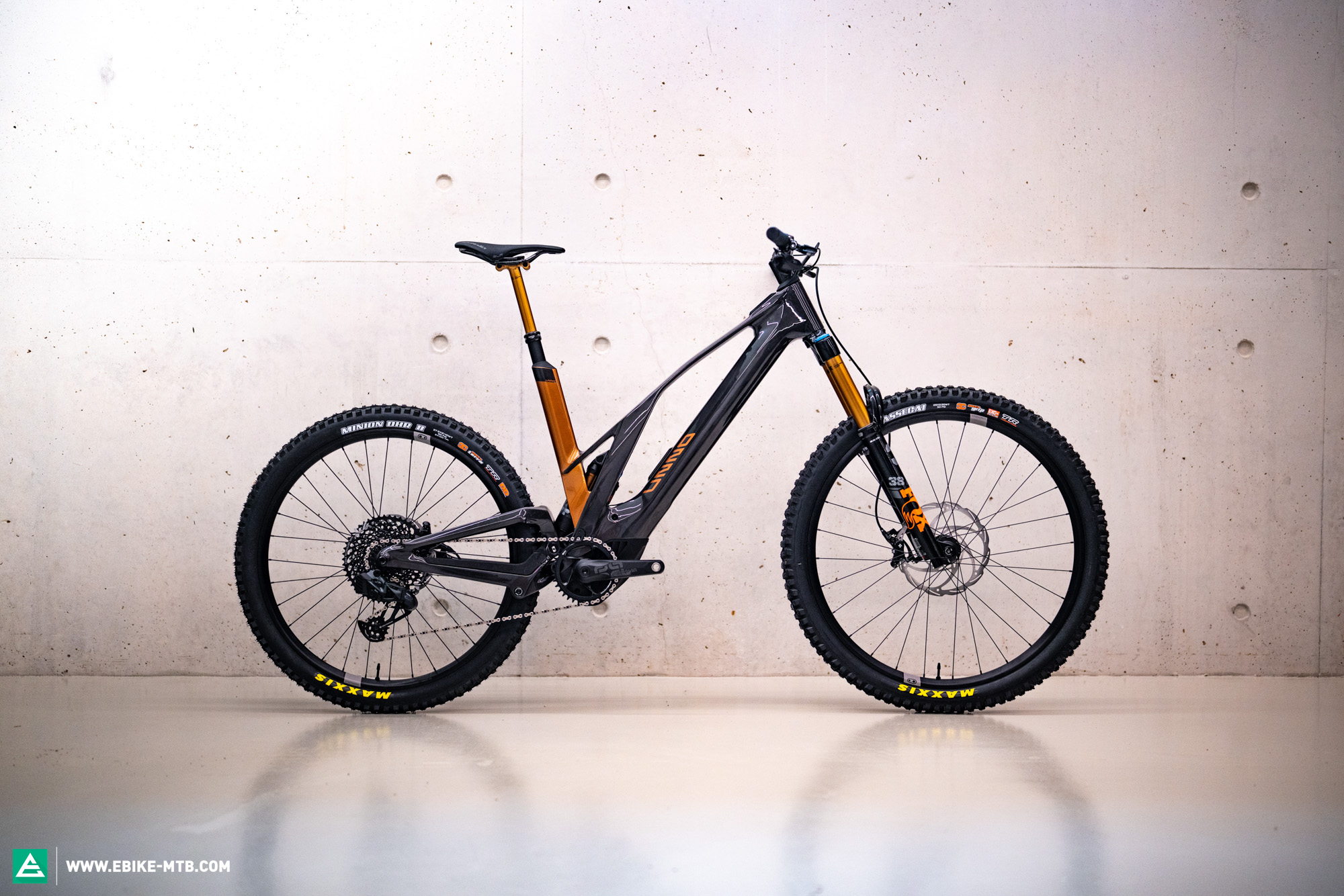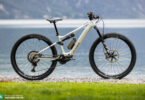Each spring, many bikers are faced with the same dilemma: Is it better to wait until next season for the release of an even newer model or buy one of the latest bikes now? When is the right time to get a new eMTB, and how quickly does the current technology on the eMTB become outdated?
Anyone who bought a computer in the 90s will remember the predicament: The processing power and storage capacities of computers experienced rapid growth. New hardware capable of the unprecedented was released virtually every minute. The prices for the latest hardware kept going up, while even components that were only a few months old dropped in value quickly, unable to keep up with the demanding hardware requirements of new software (predominantly PC games). The big question was when to jump in on the PC trend – wait another generation or spend your hard-saved pocket money on the new hot shit? Almost 30 years later, a similar phenomenon is haunting the eMTB industry. The news about exciting new eMTBs with advanced technologies is coming thick and fast. What is considered the benchmark in terms of motor, battery or software features on an ebike today may already be outdated tomorrow. Suddenly you catch yourself casting envious glances over at the guy with the latest model while sitting on your barely one year old bike. But isn’t the grass always greener on the other side? How rapid is the development of eMTBs really, and how quickly does state-of-the-art technology become yesterday’s technological standard? Or does the industry even sometimes take a step backwards and the previous model might actually be the better option for you?
From impulse buying to a well-informed pro/con list – How does a purchase decision develop in the buyer’s mind?
Before we dive deeper into the technology cycles and technology trends of the eMTB industry, let’s briefly consider how a purchase decision is usually made. It doesn’t matter whether you become an impulse buyer after the first glance at the UNNO MITH, follow the recommendation of an acquaintance or influencer, or create a four-page pros and cons list yourself, the buying process can generally be divided into five steps. Of course, the steps vary from person to person, can take weeks or last only fractions of a second, and their order might also differ.

Step 1:
Identify the problem
“I don’t own an eMTB yet? Well, that means I have a problem!” The first step is not that simple, of course. During the first step, you, as the potential ebike buyer, realise that you have a concrete need. In general, you should ask yourself what you intend to do with the eMTB and what your needs really are. EMTBing is still a fairly young sport with many newcomers. This particular group would be best served with a beginner-friendly eMTB to get to know the sport first. However, already in the first phase, a mismatch occurs between real requirements and supposed “needs”. If the manufacturers entice you with an “eMTB of the fifth generation with a new super performance mode”, you quickly get the idea that this is exactly what you need for yourself and that you can’t do without it. This leads to step 2.
Step 2:
Search for information
As already mentioned, the way people search for information varies from person to person. Some bikers simply follow the recommendations of friends, their favourite influencer or local bike shop, and find their object of desire quite quickly. But that is the exception, not the rule. Online you will find numerous reviews, opinions and sometimes contradictory data on every conceivable bike, and new information is appearing day by day. Sales researchers estimate that customers consult an average of 10 sources before making a purchase decision, so you can already see the problem. In the worst case, this leads to analysis paralysis: You are overwhelmed by the variety of information, feeling unable to make an informed decision. We have created the personalised E-MOUNTAINBIKE buyer’s guide for this very reason, saving you from suffering the same fate. Here you will gain an insight into your actual needs and find a curated initial selection of exciting bikes that have been put through their paces by us and that are potential matches for you.


Step 3:
Weigh up alternatives
Once you have made a preliminary selection of potential eMTBs, you need to weigh up the alternatives. Best case scenario: A favourite stands out and you’ve got your pick. Yet in practice, you come across unique selling points on many bikes, like a killer feature that you absolutely want in your next bike, but which is not available in combination with another must-have feature. What you get is that bike A has the largest battery, but only bike B has the display with navigation, and only manufacturer C offers the range extender. Now what? Swallow the bitter pill and resign yourself to the fact that you can’t have it all, or wait until a new bike comes onto the market that combines everything? And what if by then new features are launched which promise to do even more?
Step 4:
Deciding to buy
You’ve made your decision and buy an ebike. There’s not much to be said here, apart from explaining to your partner why the new bike is so expensive and why it’s vital to keep the old one too. Hopefully, you have written down your thoughts from steps 1 to 3 as support for the task of convincing your better half.
Step 5:
Post-rationalisation after the purchase
For many bikers, this is the beginning of a new, better phase of life: The time spent with the eMTB. But for some, the prospect of step 5 also raises serious concerns. What if expectations are not met and you have made a bad decision? Would it have been better to hold out after all? Out of fear of a possible post-purchase crisis, some of you might spin an infinite number of loops in steps 1 to 3, therefore endlessly delaying the buying decision.

Product lifecycles and technology breakthroughs – We are partly to blame for your predicament
The rapid technological development in the ebike industry is inherently desirable and part of the fascination with eMTBs. Thanks to some – but by no means all – technical innovations, ebikes are continually improving and demonstrating the potential of this bike category. We see further potential for development not only in terms of battery performance and motor power but also in terms of customisation, riding safety, design, and smart features. But if the product life cycles are too rapid and one breakthrough follows another, you can easily get the feeling that your own ebike is already outdated. Although it is technically flawless, it suddenly seems inadequate compared to newer bikes.
“Comparison is the end of happiness and the beginning of discontent.”
Søren Kierkegaard
This can be illustrated by the sometimes rapid development of battery capacities, which for many bikers is synonymous with range. Bosch, for example, have reached one milestone after another in recent years. While the actual time intervals between technological advances are already short, we perceive them as being even shorter. Often a lot of time passes between the presentation of a technical innovation and its actual availability on the market. It might even happen that the next technological step has already been announced, making a technology seem obsolete before it even hits the market. Looking at the actual market launch of Bosch batteries, it becomes clear how short the time intervals between technological steps can be for just one manufacturer alone.
| Introduction | Market launch | |
|---|---|---|
| 500 Wh battery | 2015 | 2016 |
| DualBattery | 2016 | 2017 |
| Internal PowerTube 500 Wh battery pack | 2017 | 2018 |
| 625 Wh battery | 2019 | 2020 |
| 750 Wh battery | 2021 | 2022 |
| DualBattery Smart System | 2022 | 2023? |
This poses the aforementioned dilemma in the decision-making process for some ebikers: Of course you want your eMTB equipped with all the latest technology available on the market, but how long will the technological supremacy last and when will the next “big thing” appear? Is it perhaps worth waiting for the next generation of eMTBs? This is where we, the specialist press, are partly responsible for your dilemma. While we keep you up-to-date with what the industry has in store for the future, we fuel your anticipation. To prevent you from drifting into unrealistic expectations, a paradigm shift has taken place in our editorial team: Instead of overwhelming you with a flood of news, we now prefer to publish solid tests – and, if necessary, to put the forecasts on the back burner.

EMTB veterans who have already lived through several ebike generations are able to cope with the relatively fast technology cycles. For them, regularly appearing ebike generations even simplify the purchase decision. This kind of buying behaviour can also be observed among many iPhone owners. For 11 years now, between September and October, Apple have released their latest generation of iPhones. Meaning that users have had over a decade to adapt to the technological evolution and adjust their purchasing behaviour accordingly. But long-standing ebikers are the exception rather than the rule. Compared to mountain biking, the eMTB community is still in its early days and is constantly being shaken up by disruptive technological breakthroughs.This is precisely where we see our responsibility. Instead of complicating your buying decision with enticing product promises, it is up to us to classify the new products and through our comparison tests show you valid alternatives, which, in some cases, have already been around for one or two years.
Retrospective vs. future perspective – It depends on the viewpoint
As mentioned before, there are many product promises for upcoming innovations, but whether they will actually transpire is written in the stars. And is it really worth waiting for? For example, almost four years passed from the time freeride legend Cédric Gracia let us in on his plans for the new Forestal bikes until the first test bike actually reached us. The Forestal Siryon is undeniably a cool bike, but to let several beautiful summer seasons go by waiting for it is certainly not the most sensible thing to do.

A change of perspective could quicken your personal buying decision. Instead of focusing on what might become a trend in the future, try taking a look back at the ebikes on the market that have already stood the test of time. eMTBs like the Orbea Rise or the MERIDA eONE-SIXTY have changed little over the years, the Yeti 160E and the current Specialized Levo have remained virtually unchanged since their launch. Still, we’ve had all of these bikes at least three times in comparison tests in the E-MOUNTAINBIKE magazine or in our sister magazines ENDURO and DOWNTOWN. They have always been able to hold their own against the partly much newer bikes in the test and are also widely available. The pioneering motor system integration of the Specialized Levo became the blueprint for many eMTBs that followed. Yeti and MERIDA have hit a sweet spot with their chassis balance and geometry, combining many positive riding characteristics. With the Rise, Orbea have succeeded in creating a light concept that not only easily keeps up with the newer generation of light eMTBs but also leaves some of them, plagued by teething problems, behind in a cloud of dust. In fact, some owners of newer lightweight ebikes unwillingly became the long-suffering beta testers, having to wait for software updates from the motor manufacturers.
Are new eMTBs overpriced and unreliable? – When cutting edge technology becomes bleeding edge technology
Needless to say, new bikes and technologies bring a breath of fresh air to the market. Unfortunately, this fresh air sometimes turns into a stiff breeze, bringing with it some serious drawbacks for the end consumer. The ebikes with the latest technologies and concepts are usually the most expensive and also suffer the most from price deterioration. In our article “Caviar and Kashima”, you will find out exactly what makes these bikes so costly. Even if you can somehow come to terms with the high prices, hardly anyone likes to pay a four- or even five-figure sum for a bike to see it being placed on sale at the end of the season with a 30% discount. Cleverly, eMTB veterans strategically wait for the launch of the newest generation to cash in on big discounts on the supposedly “old” eMTBs. However, this buying strategy carries the risk of ending up empty handed at the end of the season.

A new broom sweeps clean, but an old broom knows the corners.
Another drawback of brand new technologies is that sometimes they need time to mature like a good wine. Incomprehensible error codes on the ebike display caused by bugs in the motor software, dealers with little or no troubleshooting experience of the newest systems, a very limited feature catalogue, and a lack of additional accessories all put a downer on the riding pleasure. Some ebikes only develop their full potential in the course of ownership or towards the end of their product life cycle through continuous software updates and a growing range of accessories. As an example, this can be illustrated with a snapshot from 2021 when the Bosch Smart System was launched. When the Smart System was introduced as the successor to the Bosch eBike System 2, it was actually the “dumber” of the two systems. Its hardware was more modern and it had new interfaces to other components, but the ecosystem was nowhere near as mature as its predecessor’s and it was not backward compatible with existing hardware. Unlike the old system, it had no navigation functions, no anti-theft protection and only one remote, battery and display option. The switch to the new “cutting edge” technology was accompanied by a sharp and sometimes painful cut in the range of functions. It is only over the last one and a half years that the range of software functions, hardware and accessories has been expanded in a way that the previous Bosch eBike System 2 is beginning to show signs of obsolescence. This also applies to other motor systems such as the ones from Specialized, Shimano or FAZUA, which are kept state-of-the-art with frequent software updates and upgraded with new functions. If we tried to recap this as a proverb, it would probably read: A new broom sweeps clean, but an old broom knows the corners.
Ebike technology will keep making major leaps, but instead of waiting for the supposed next world-changing innovation, it makes way more sense to take advantage of the current situation. You just need to figure out what you really need for the next season and make sure you’re all set when days start getting warmer. After all, time spent in the saddle is far more precious than a bike that may yet come along. And if you still need help with your purchase decision, you’ll find it in our free and personalised buyer’s guide!
Did you enjoy this article? If so, we would be stoked if you decide to support us with a monthly contribution. By becoming a supporter of E-MOUNTAINBIKE, you will help secure a sustainable future for high-quality cycling journalism. Click here to learn more.
Words: Rudolf Fischer Photos: Various









